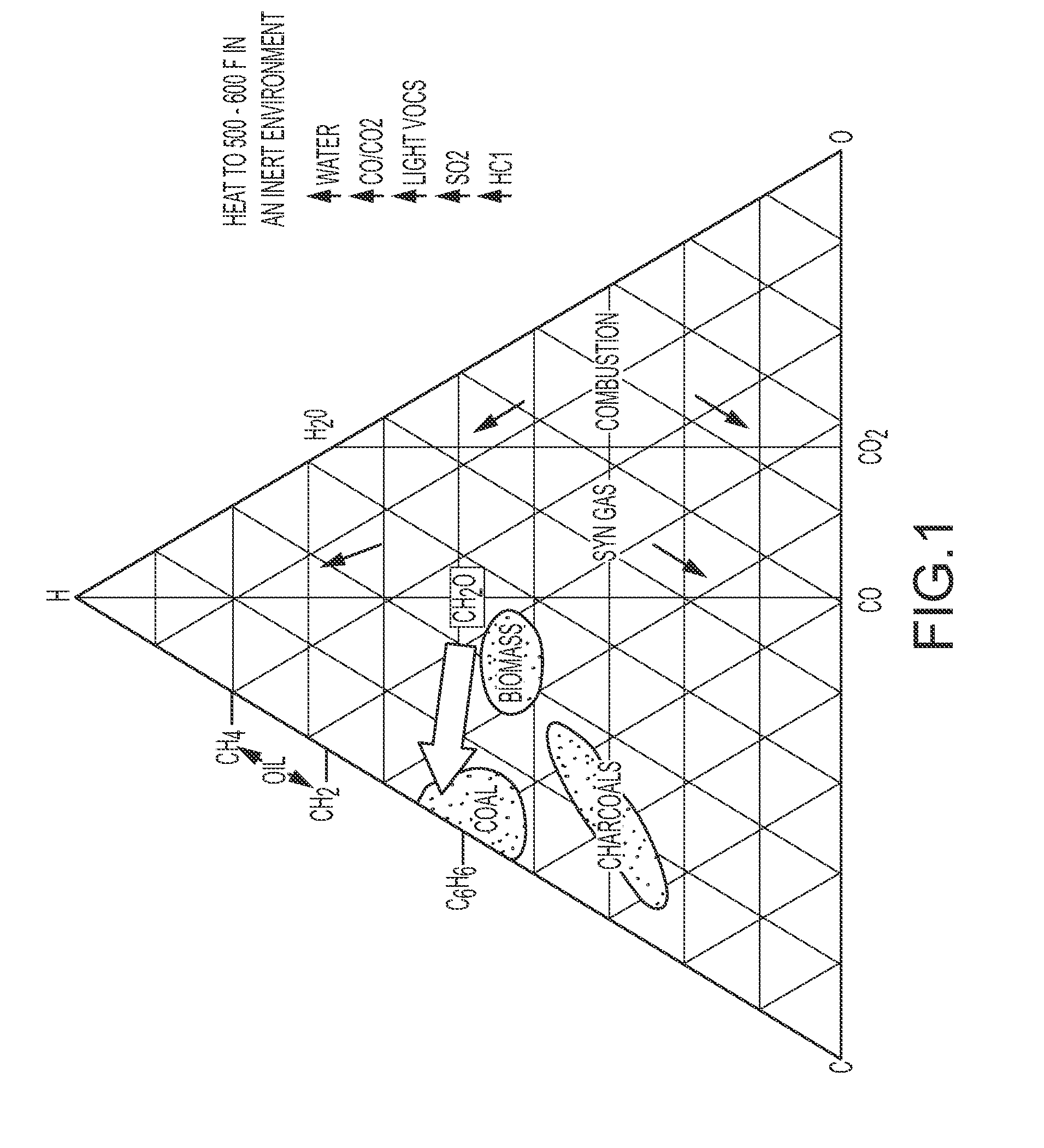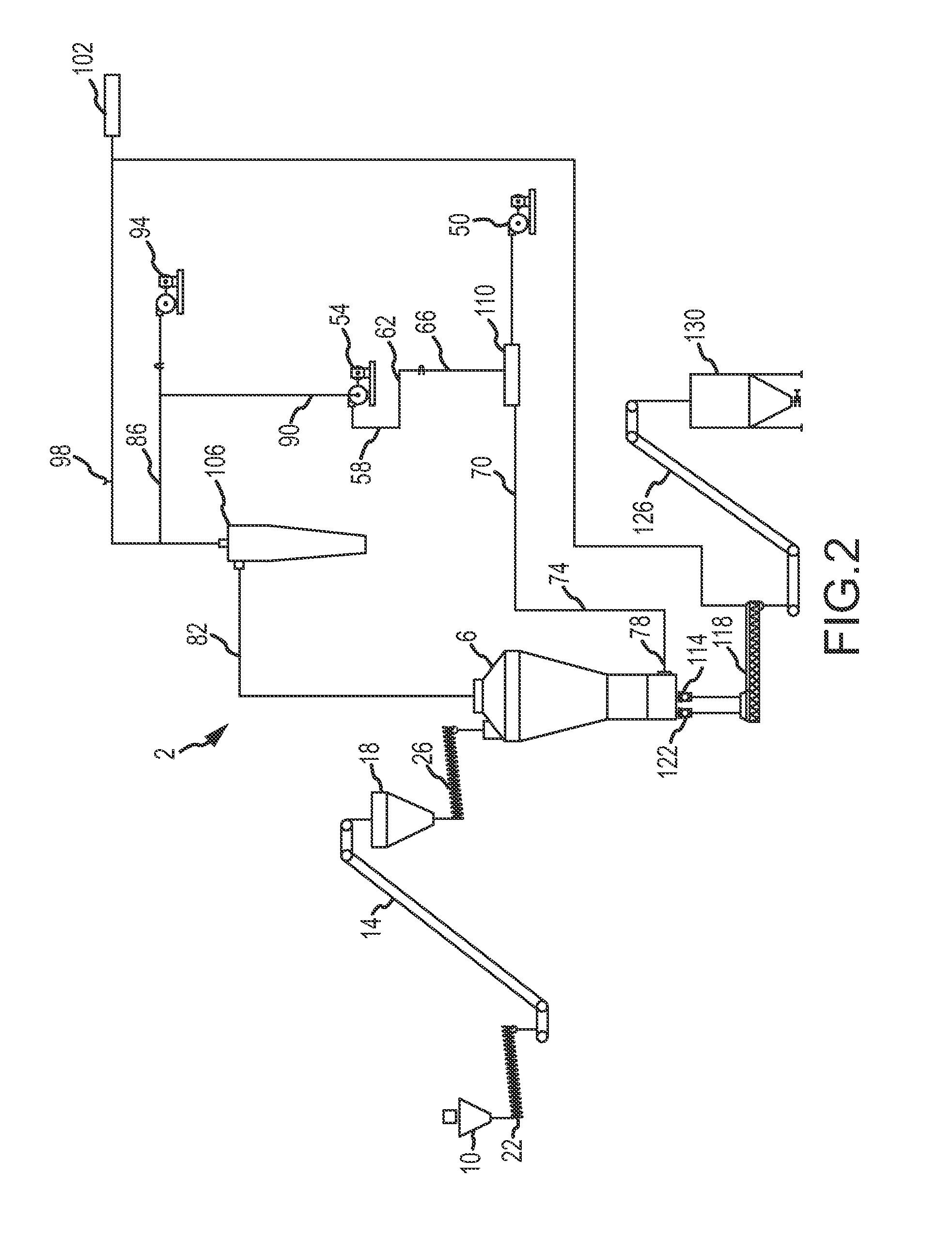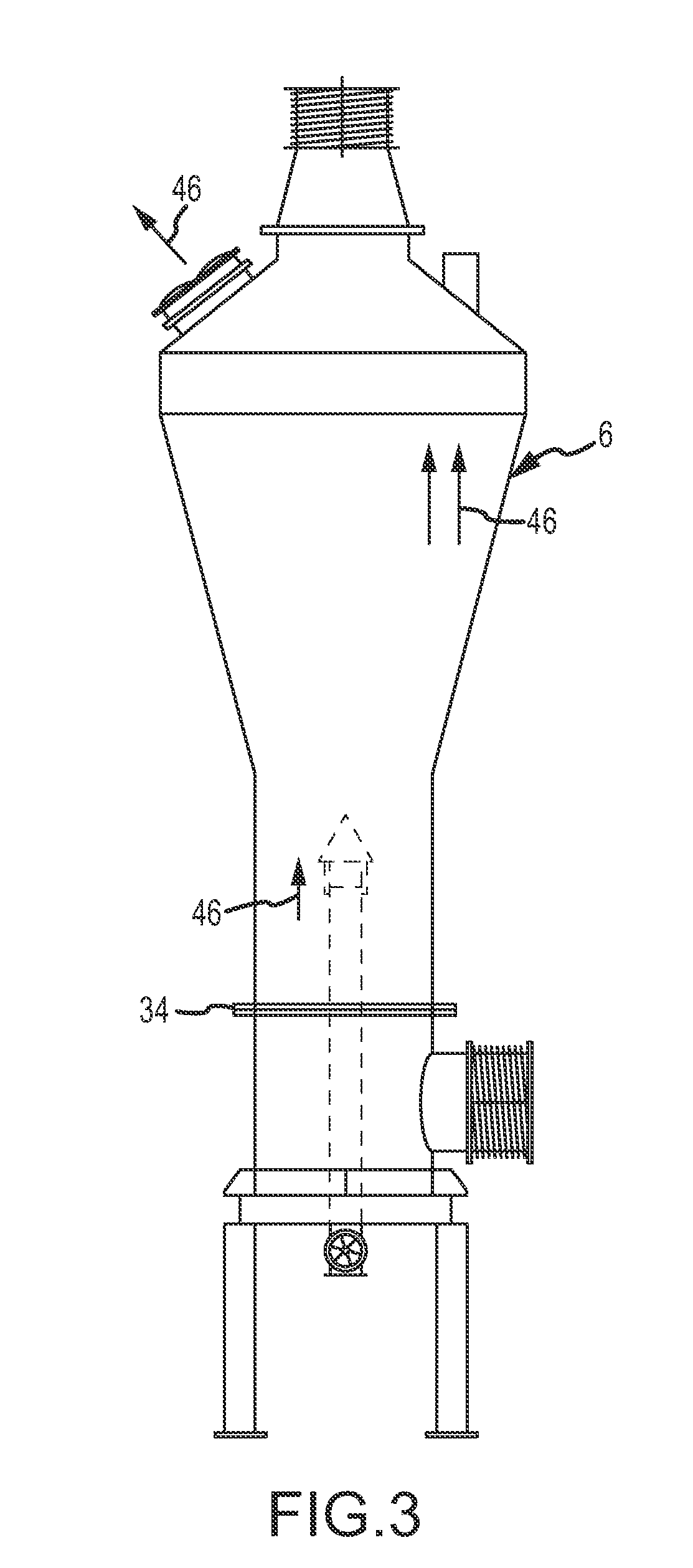Method of drying biomass
a biomass and drying technology, applied in biofuels, waste based fuels, fuels, etc., can solve the problems of inability to use biomass as fuel, increase the cost of transportation of biomass, and high cost of biomass, so as to improve the grindability and handling characteristics of biomass, reduce the moisture content, and increase the heating valu
- Summary
- Abstract
- Description
- Claims
- Application Information
AI Technical Summary
Benefits of technology
Problems solved by technology
Method used
Image
Examples
Embodiment Construction
[0065]FIG. 1 is a schematic representation showing the relationship between biomass, coal, and charcoal. It is one goal of embodiments of the present invention to provide a system and process suited for altering biomass, regardless of its source, such that it behaves like coal. One advantage of providing biomass that behaves like coal is that existing coal burning electrical power plants can use the processed biomass without substantial modifications. To make biomass a viable alternative, moisture content must be reduced, heating value must be increased, grindability and handling must be improved, hydrophobicity must be imparted, shelf life must be increased, energy density must be increased, and homogeneity must be improved. To achieve these objectives, embodiments of the present invention treat biomass by torrefaction wherein water, carbon dioxide, carbon monoxide, light volatile organic chemicals, sulphur dioxides, and hydrochlorides are driven out of the raw biomass. The end res...
PUM
| Property | Measurement | Unit |
|---|---|---|
| temperature | aaaaa | aaaaa |
| density | aaaaa | aaaaa |
| velocity | aaaaa | aaaaa |
Abstract
Description
Claims
Application Information
 Login to View More
Login to View More - R&D
- Intellectual Property
- Life Sciences
- Materials
- Tech Scout
- Unparalleled Data Quality
- Higher Quality Content
- 60% Fewer Hallucinations
Browse by: Latest US Patents, China's latest patents, Technical Efficacy Thesaurus, Application Domain, Technology Topic, Popular Technical Reports.
© 2025 PatSnap. All rights reserved.Legal|Privacy policy|Modern Slavery Act Transparency Statement|Sitemap|About US| Contact US: help@patsnap.com



